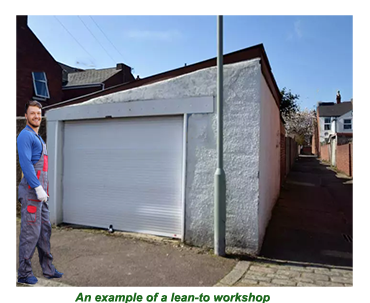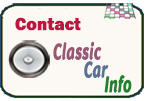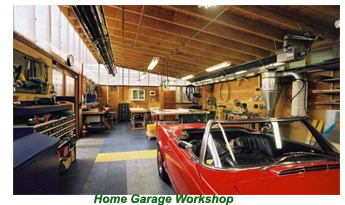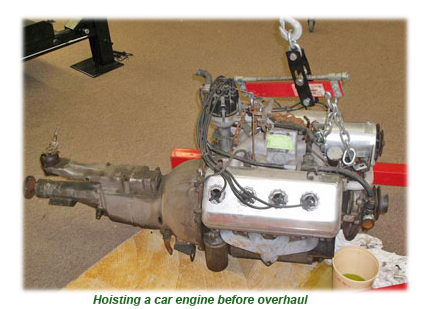 Even while they can be totally engrossed in their search for the ideal classic car to bring back to life, the beginner restorer should invest some of their time and resources to ensure that they will have somewhere to bring the car home.
Even while they can be totally engrossed in their search for the ideal classic car to bring back to life, the beginner restorer should invest some of their time and resources to ensure that they will have somewhere to bring the car home.
 The ideal situation for an aspiring restorer is having access to a workshop attached or adjacent to their home; ideally, that can be used rent-free.
The ideal situation for an aspiring restorer is having access to a workshop attached or adjacent to their home; ideally, that can be used rent-free.
If that is not possible, then every attempt must be made to find a workshop that meets at least one of these criteria.
It would be easy to downplay the significance of having ideal conditions to work on a car rebuild. The truth is that a large number of restoration projects do not succeed because the restorer failed to find or set up a suitable workplace to house their project.
 Having nowhere to house a restoration car means leaving it outside in the street or a driveway; this situation will not be the best for the car's health and make it vulnerable to vandalism or parts theft -or both.
Having nowhere to house a restoration car means leaving it outside in the street or a driveway; this situation will not be the best for the car's health and make it vulnerable to vandalism or parts theft -or both.
 To help the search for the ideal workshop, standards should be set - with the first being that it should be in clean and sound condition, possible to be heated or cooled when necessary, watertight, well-lit and with level floors.
To help the search for the ideal workshop, standards should be set - with the first being that it should be in clean and sound condition, possible to be heated or cooled when necessary, watertight, well-lit and with level floors.
The ideal dimensions should be at least four meters long and as wide, enough to house the vehicle comfortably, as well as providing ample workspace space- at least two meters all around.
![]()
Many beginner restorers fail to grasp as it means that a standard dimension lock-up garage will not provide sufficient space to work on all but the most compact of cars.
 The workshop building should ideally be brick-built, the most lasting and heat-insulating material. Walls should also be strong enough to support equipment.
The workshop building should ideally be brick-built, the most lasting and heat-insulating material. Walls should also be strong enough to support equipment.
Connections to the building must include water, gas and electricity are a must. The electricity supply should be three-phase, allowing for the use of powerful machine tools. Ideally, several single-phase 5-amp power plugs should be strategically placed around the walls of the workshop.
 While powerful electric lighting is a must, no workshop can adequately function without access to artificial lighting, which should be as powerful as possible. To increase vision, a coat of whitewash on all the walls and ceiling will be a worthwhile investment.
While powerful electric lighting is a must, no workshop can adequately function without access to artificial lighting, which should be as powerful as possible. To increase vision, a coat of whitewash on all the walls and ceiling will be a worthwhile investment.
Easy access is also an issue with most working garage workshops coming with roller doors allowing for maximum use of floor space and providing greater clearance at the garage entrance.
Retractable up and over garage doors are recommended for openings of eight feet or over or where the doors have been set up to operate automatically.
The single principal disadvantage of fitting "up and over" garage doors is that the style does not lend itself to climate retention due to the large gap between the door frame and the opening, which will allow cold or warm air to flow freely into the workplace.
Some more modern workshops come with a form of insulation, meaning that heat of cold generated will be retained, meaning that the vehicle and equipment will be protected from dampness and condensation.
 The ideal workshop building can either have a flat roof with the preferred option a pitched roof, better still with a floor above the workspace, providing auxiliary storage.
The ideal workshop building can either have a flat roof with the preferred option a pitched roof, better still with a floor above the workspace, providing auxiliary storage.
 At this stage, many inexperienced restorers, anxious to get started on their project, begin to cut corners and forget the fine print.
At this stage, many inexperienced restorers, anxious to get started on their project, begin to cut corners and forget the fine print.
Before the car and the tools and equipment to work on are brought to the workshop, proper insurance must be taken out to cover theft or damage and the possibility of work accidents.
The restorer should also make sure that proper safety precautions are put in place and followed during the length of the restoration project.
 These then represent the fundamental requirements to enable restoration to become a viable and enjoyable proposition .
These then represent the fundamental requirements to enable restoration to become a viable and enjoyable proposition .
There are dozens of ways of organising a workshop, and much will depend on what the restorer has available in the form of space and materials.
The most important thing is to create a safe and tidy working environment, setting the ideal scene for a gratifying and successful restoration project.
Back to the homepage- and don't spare the horsepower.


